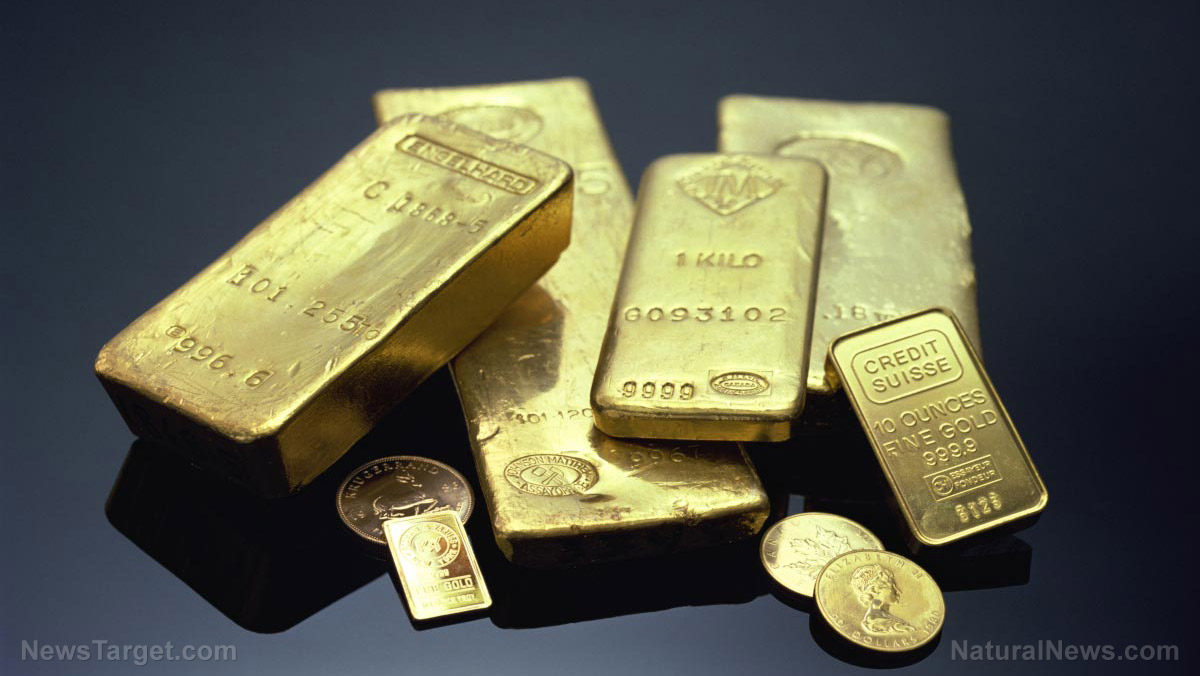
The copper-gold ratio is regularly used as a financial indicator by institutional asset managers to gauge the overall health of the economy, investor sentiment regarding the market and future inflation expectations. (Related: Central banks continue their streak of accumulating more gold in 2023.)
Copper and gold are two key commodities regularly traded in the American financial world due to their distinct properties and uses. Copper is an industrial metal widely used in construction, electronics and manufacturing. Gold, on the other hand, is a precious metal that is regularly used as a safe haven investment during times of economic uncertainty and market volatility.
The price of copper tends to rise during periods of robust economic growth, while gold prices typically appreciate when investors turn to precious metals to preserve their wealth.
The copper-gold ratio is calculated simply by dividing the price of copper by the price of gold. If the copper-gold ratio rises, this means copper is starting to outperform gold, indicating increased demand for industrial metals and suggesting a positive outlook for the global economy.
But when the copper-gold ratio falls, it implies that gold is outperforming copper and more investors are risk-averse and turning to gold in uncertain economic climates.
Gold prices up, copper prices down amid economic uncertainty
Copper prices touched a near six-month low on Tuesday, May 23. Copper for delivery in July 2023 fell by 0.7 percent on New York's Comex market to $3.65 per pound or $8,030 per ton.
"The short-term outlook has deteriorated with the recession risks in Europe and the U.S., and a Chinese recovery that has not been commodity intensive," noted Ole Hansen, head of commodity strategy at Saxo Bank in Copenhagen, Denmark.
Gold prices for the past few weeks, meanwhile, have been approaching near-record highs and the precious metal has spent a sustained period above the $2,000 threshold. Gold prices on Wednesday, May 24, dipped very slightly, but remain six percent above the year-over-year average, according to data from the World Gold Council.
"Gold's price may have increased over the past several weeks, but there's reason to believe that it's not yet at its peak," writes Kendall Little for CBS News. "With a volatile economy creating uncertainty in other markets, gold is one way investors can maintain some stability and possibly even see growth over time."
Gary Tanashian, writing for Investing.com, pointed out how much of the Federal Reserve's interest rate hikes play a dominant role in worsening the health of the economy and, by extension, the copper-gold ratio.
"The daily chart of the copper-gold ratio continues to break down on the implied day of the Fed's last rate hike," wrote Tanashian. "[The ratio] could reverse and rally tomorrow. It could also tank further, taking the herds with it. I, and the people I write for, are currently prepared for the second thing as the predominant trend for perhaps many months forward."
The inventor of the copper-gold ratio, famed money manager Jeffrey Gundlach, even warned back in March that a recession could happen within the next four months, thanks to recent bank failures in the U.S., which have exacerbated the already tight financial conditions caused by the Fed punitively raising borrowing rates.
"There is obviously financial fragility in Europe and the United States is also trying to cause a recession," said Gundlach.
Learn more about the precious metals market at Metals.news.
Watch this episode of "Liberty and Finance" as host Elijah K. Johnson interviews author and financial expert Peter Grandich about how gold demand will soon defeat the paper market.
This video is from the channel Liberty and Finance on Brighteon.com.
More related stories:
Record-breaking gold purchases by central banks observed in Q1 2023.
Zimbabwe needs $100 million in gold to plan support ambitious digital currency plan.
Major supply gap in copper industry is threatening the transition to green energy.
Tennessee passes bill authorizing state treasury to buy, sell and stockpile gold and silver.
Sources include:
Please contact us for more information.





















